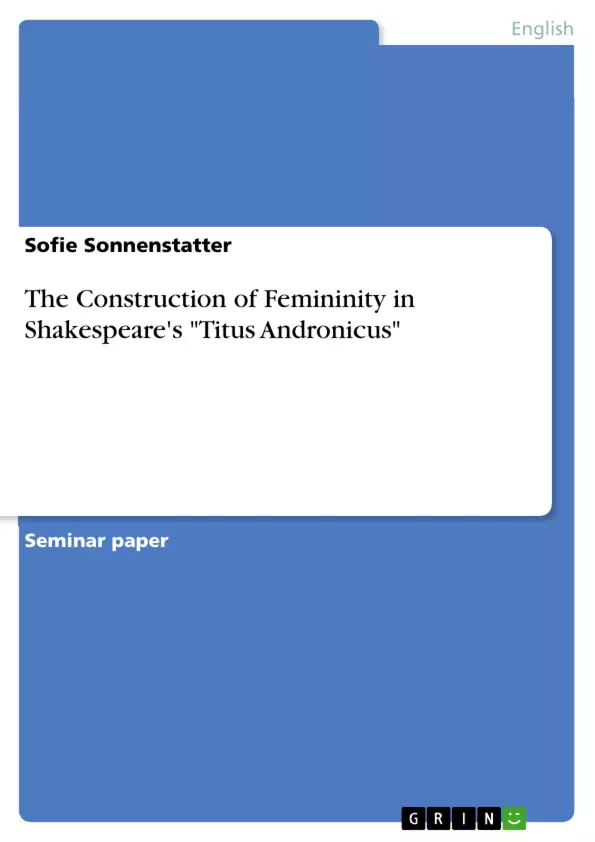Shakespeare’s revenge tragedy Titus Andronicus is his most gruesome play. It has been harshly criticized for its exaggerated cruelty and was certainly not among his most popular works. However, the play aroused a somewhat greater interest within the field of gender studies and the feminist approach to literature. The simplified, objectified and polarized depiction of the female characters virtually stares the gender-conscious reader in the face; this is an open invitation for closer inspection. Though the virgin-whore dichotomy was quite common in Elizabethan literature, it is carried to extremes in Titus Andronicus. In the following the construction of femininity and the female characters in the play, Lavinia and Tamora, will be analyzed against the background of the perception of femininity in Shakespeare’s time.
- Arbeit zitieren
- Sofie Sonnenstatter (Autor:in), 2008, The Construction of Femininity in Shakespeare's "Titus Andronicus", München, GRIN Verlag, https://www.grin.com/document/142752



